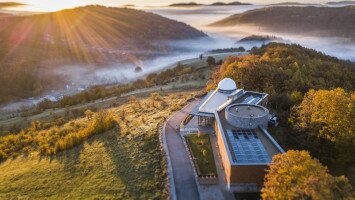2022/1. - 9. Tree studies
08/23/2022 3:57 PM
Baumstudie
[28.07.2022]Gemeinsam mit einer ungarischen Studentin haben wir in der letzten Zeit begonnen Bäume auf einer Weide zu tracken und nach einem ausführlichen Katalog zu beurteilen. Im Nationalpark sprechen wir immer von „Veteran Trees“, also besonders alten Bäumen. Bisher kann keiner Abschätzen wie viele es sind, es sind nur recht grobe Angaben von ca. 1000 Bäumen. Jedem Baum ist ein A4 Zettel gewidmet, auf dem erst Daten wie die Koordinaten, der lateinische Name und Maße wie z.B. die Höhe und der Umfang angegeben werden müssen. Für die Ermittlung der Höhe des Baumes wird eine Entfernung von 20m abgemessen. Von dort aus wird mit einem analogen Höhenmesser der Winkel zum Beginn des Stamms und der Winkel zum höchsten Teil der Baumkrone bestimmt. Die beiden Zahlen ergeben gemeinsam die Höhe. Danach kommen 36 Felder in denen unter anderem Angaben über Astlöcher, Kronen- oder Starkastabbrüche, Krankheits- oder Pilzbefall, Moos- und Flechtenvorkommen und Nester, die sich im Baum befinden. Zusätzlich kommen dann noch einmal 15 weitere Felder, wo z.B. nach anderen Bäumen in der direkten Umgebung gefragt wird. Die Aussagen, die wir über die Bäume treffen werden immer mit der Hilfe von für solche Studien angefertigte Kataloge getroffen. So sind in manchen Fällen verschiedene Bilder dargestellt und wir müssen entscheiden, welches dem untersuchten Baum am nächsten kommt. Zusammengefasst ist es eine sehr detaillierte Studie, weshalb wir am ersten Tag auch nur insgesamt 8 Bäume geschafft haben. Mit der Zeit wird man jedoch deutlich routinierter und muss nicht mehr alles erst im Katalog nachschlagen, wodurch die Arbeit deutlich schneller vorangeht. Insgesamt haben wir dennoch nur 60 von den ca. 1000 Bäumen tracken und beurteilen können.
Read more



















